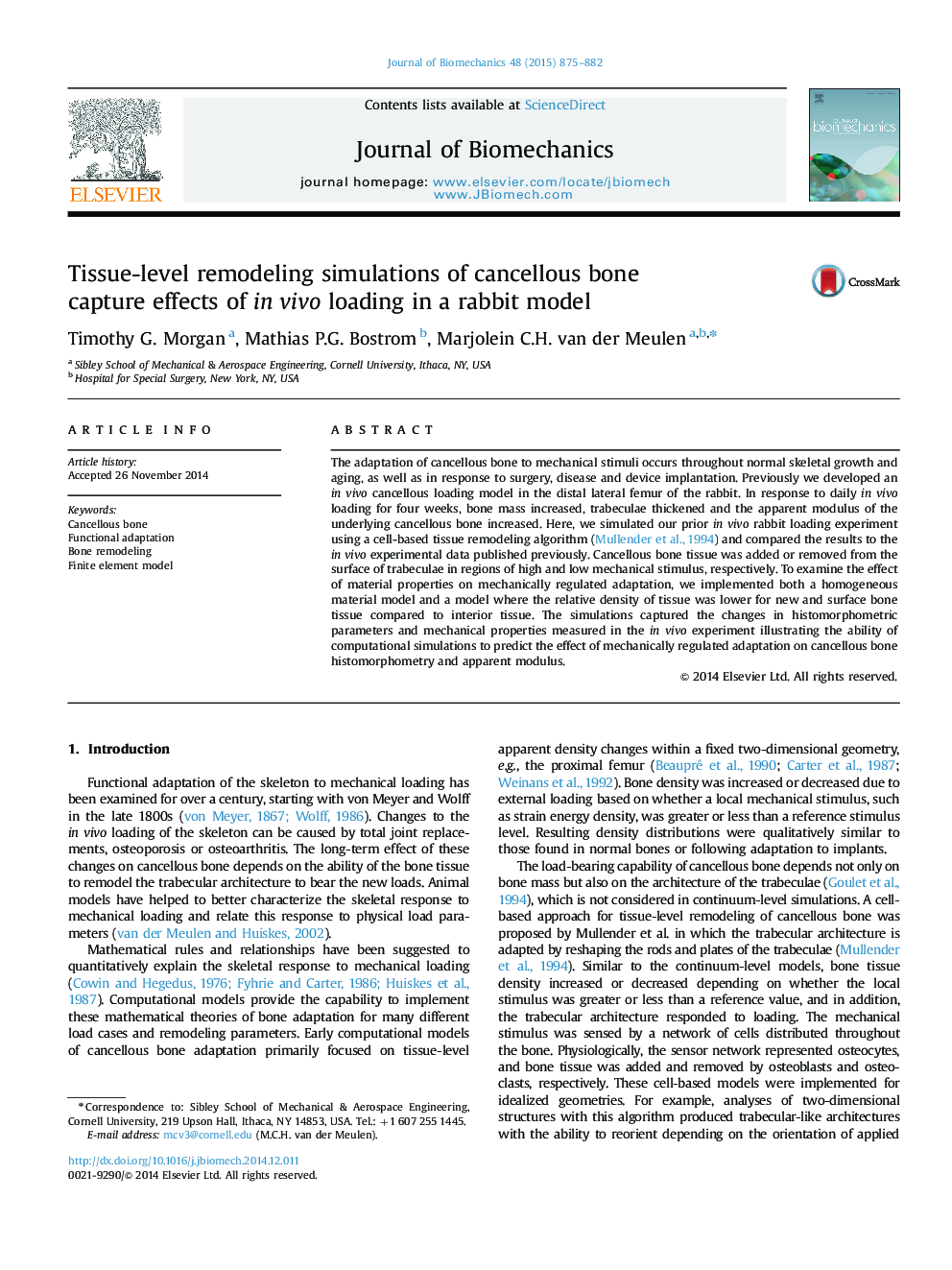| Article ID | Journal | Published Year | Pages | File Type |
|---|---|---|---|---|
| 10431601 | Journal of Biomechanics | 2015 | 8 Pages |
Abstract
The adaptation of cancellous bone to mechanical stimuli occurs throughout normal skeletal growth and aging, as well as in response to surgery, disease and device implantation. Previously we developed an in vivo cancellous loading model in the distal lateral femur of the rabbit. In response to daily in vivo loading for four weeks, bone mass increased, trabeculae thickened and the apparent modulus of the underlying cancellous bone increased. Here, we simulated our prior in vivo rabbit loading experiment using a cell-based tissue remodeling algorithm (Mullender et al., 1994) and compared the results to the in vivo experimental data published previously. Cancellous bone tissue was added or removed from the surface of trabeculae in regions of high and low mechanical stimulus, respectively. To examine the effect of material properties on mechanically regulated adaptation, we implemented both a homogeneous material model and a model where the relative density of tissue was lower for new and surface bone tissue compared to interior tissue. The simulations captured the changes in histomorphometric parameters and mechanical properties measured in the in vivo experiment illustrating the ability of computational simulations to predict the effect of mechanically regulated adaptation on cancellous bone histomorphometry and apparent modulus.
Related Topics
Physical Sciences and Engineering
Engineering
Biomedical Engineering
Authors
Timothy G. Morgan, Mathias P.G. Bostrom, Marjolein C.H. van der Meulen,
